By Evelyn Nguyen, May 27, 2025
Are you excited to discover the breathtaking beauty of Vietnam, where stunning nature and vibrant culture come together? With the Vietnam tourist map by your side, you’ll find it so easy to reach iconic landmarks, dive into colorful festivals, savor delicious local dishes, and explore the best travel routes for your upcoming S-shaped country adventure!
Think of the Vietnam tourist map as your personal key to unlocking an amazing experience. This detailed guide from Incredible Asia Journeys will help you find your best ways through the diverse regions of Vietnam from north to south truly unforgettable!
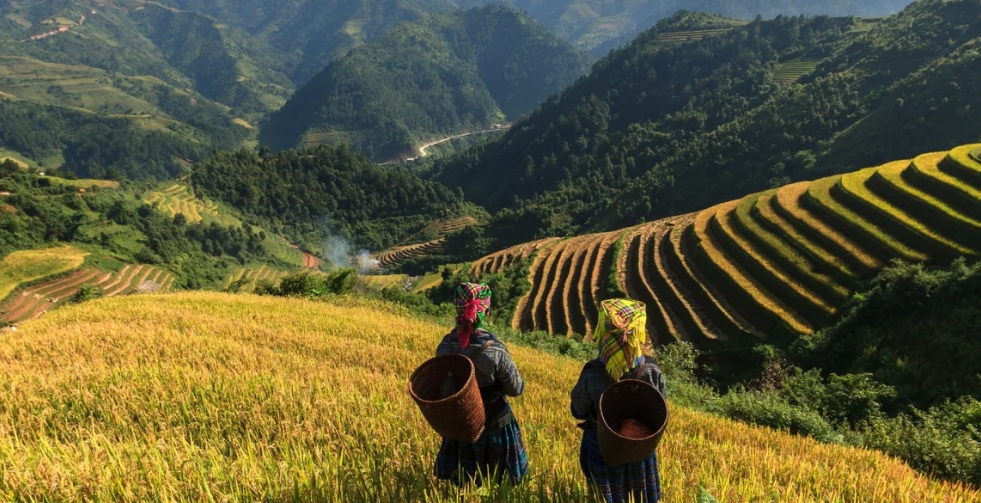
Vietnam Rice Terraced Fields
Did you know that Vietnam is likened to an S-shaped pearl lying gracefully on the East Sea coast? With a length of about 1,650 km, from the northernmost point at Lung Cu (Ha Giang) to the southernmost point at Ca Mau Cape, Vietnam possesses diverse beauty, stretching across many regions with distinct characteristics.
Vietnam is located in the East of the Indochina peninsula, bordering China (1,281 km of border) in the North, Laos (2,161 km) and Cambodia (1,137 km) in the West, and the East Sea stretching to the East and South. With this location, Vietnam plays an important role as a bridge in the Southeast Asian region.
The S-shaped country has a width of only about 50 km at its narrowest point (Quang Binh) and up to 600 km at its widest point (Mekong Delta).
With an area of approximately 331,212 km², Vietnam ranks 65th in the world in terms of area. The 3,260 km long coastline runs from North to South, making Vietnam one of the most attractive destinations for marine and island activities.
The North is notable for its majestic mountain ranges such as Hoang Lien Son, home to the 3,143 m high Fansipan peak - known as the “roof of Indochina”.
The Central region is home to sand dunes, the Truong Son mountain range, and famous beaches such as My Khe and Lang Co.
The South is notable for its intricate Mekong river systems and vast plains such as Can Tho and Cuu Long.
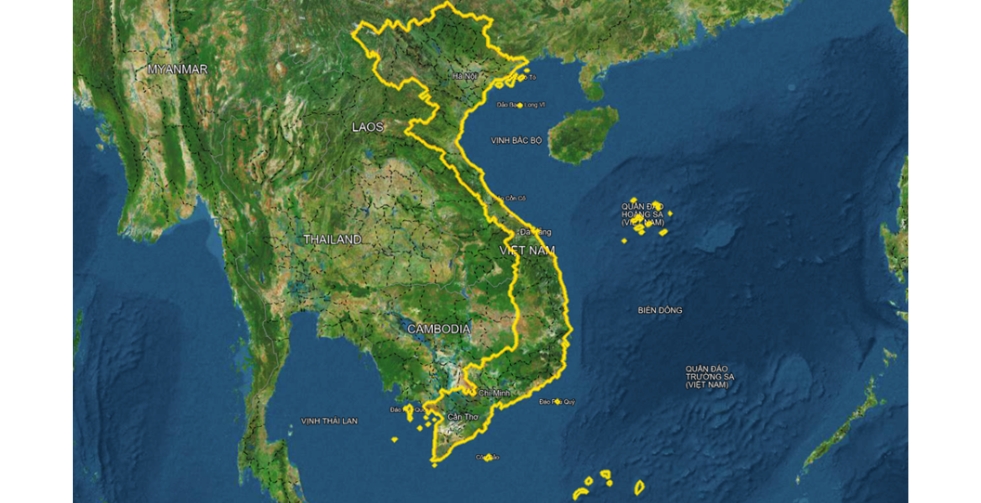
Vietnam map
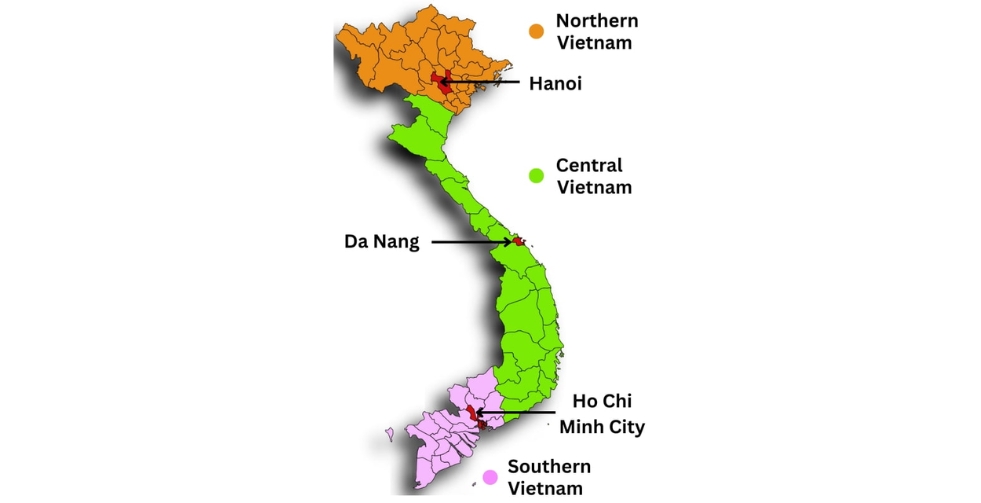
3 regions in Vietnam
Vietnam, with three regions North - Central - South, is a colorful picture from the mountains to the fertile plains and poetic blue sea. Each land brings an emotional journey so that anyone who sets foot there wants to explore endlessly. The Vietnam tourist attraction maps will guide you through the destinations that are not to be missed.
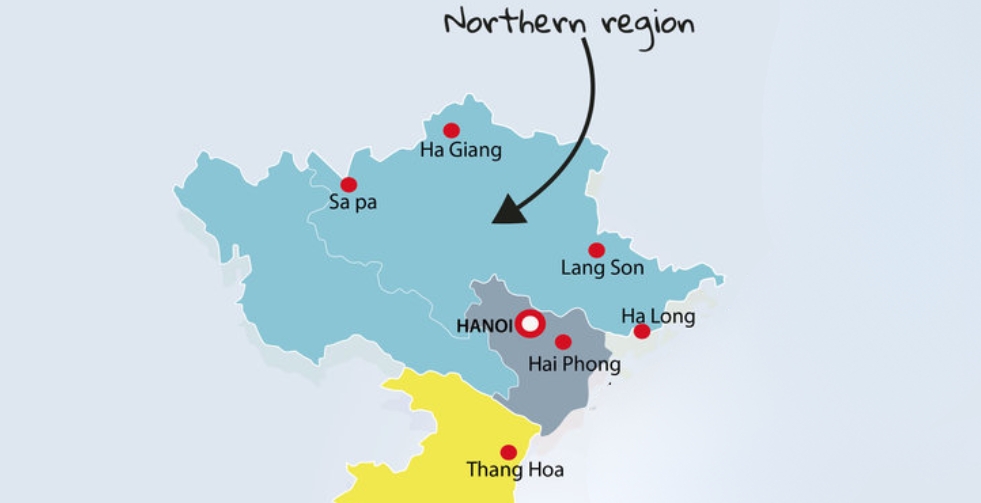
Northern Vietnam
First on the Vietnam map is Northern Vietnam, a place that preserves the pristine beauty of nature and a long history and culture. This area is divided into two main tourist regions: the Northwest and the Red River Delta.
The Northwest is famous for its majestic mountains, lush green valleys, and breathtaking mountain passes. This land is an ideal destination for those who love to explore the wild beauty of nature and the unique culture of ethnic minorities such as the H'Mong, Thai, and Dao.
With a cool climate all year round, the Northwest is especially attractive to tourists during the rice harvest season (September - October) when the terraced fields are bright yellow, or the apricot and plum blossom season (January - February).
Some notable destinations here include Sapa (Lao Cai) with its picturesque terraced fields and majestic Fansipan peak; Moc Chau (Son La) with its lush green tea hills and poetic grasslands; Ha Giang with the Dong Van stone plateau, Ma Pi Leng pass, and Lung Cu flagpole - the northernmost point of Vietnam, or Mai Chau (Hoa Binh) with a peaceful space imbued with Thai culture.
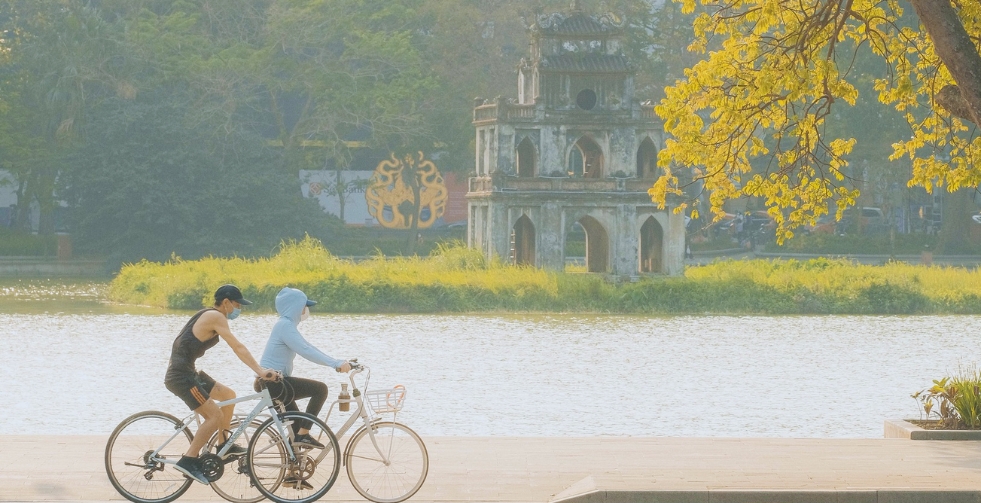
The Red River Delta, on the other hand, is a fertile land, nourished by large river systems such as the Red River and the Thai Binh River. This is the cradle of the wet rice civilization and also the origin of many long-standing cultural and historical values. This land is famous for its cultural relics, ancient temples, and traditional festivals. The capital Hanoi is the heart of the delta, with Hoan Kiem Lake, Hanoi Old Quarter, and Ho Chi Minh Mausoleum.
In addition, Ninh Binh attracts tourists with the Trang An scenic complex, Bai Dinh Pagoda, Tam Coc - Bich Dong, and Hang Mua. Hai Phong, the largest port city in the North, is famous for Cat Ba Island and Lan Ha Bay - beautiful island destinations.
Plan Your Tours to Northern Vietnam Now
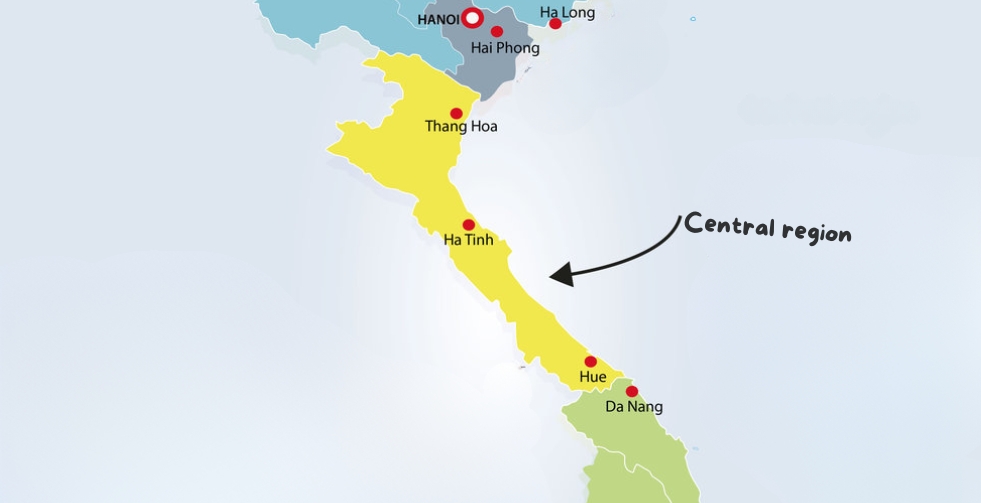
Central Vietnam
Central Vietnam is a land of mountains, seas, and rich historical culture. This area stretches from the Hoanh Son range to the Bach Ma range, divided into two main regions, the North Central and the South Central.
The North Central region is home to many world cultural heritages and historical destinations. Hue, the capital of the Nguyen Dynasty, attracts tourists with the Complex of Ancient Capital Monuments, Thien Mu Pagoda, and the poetic Huong River. Quang Binh is the "kingdom of caves" with Phong Nha - Ke Bang, the majestic Son Doong Cave, and pristine beaches.
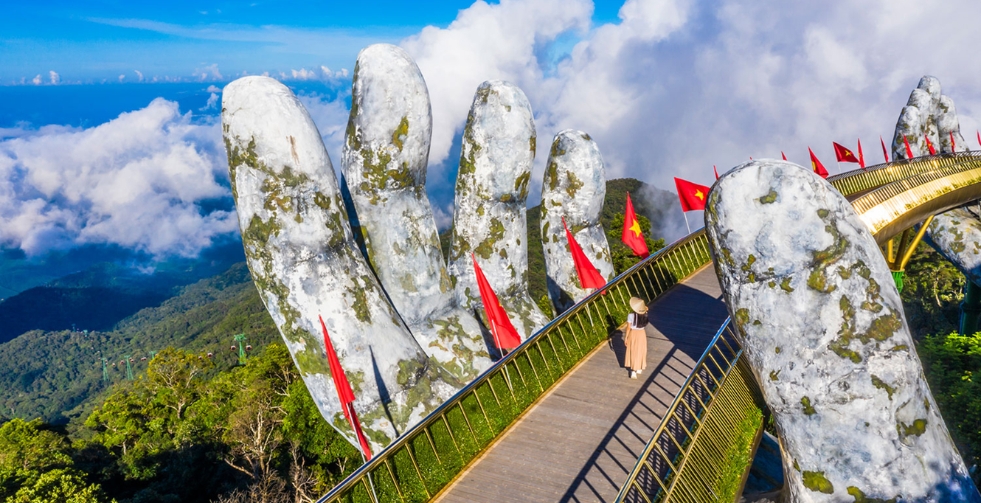
Dragon Bridge in Da Nang
The South Central region is a land of sunshine and wind, famous for its clear blue beaches, poetic islands, a unmissable site in Vietnam best places to visit map. Da Nang, the most livable city in Vietnam, impresses with its Dragon Bridge, Marble Mountains, and Son Tra Peninsula.
Nearby, Hoi An (Quang Nam) is a world cultural heritage with a peaceful ancient town, sparkling lanterns, and delicious cuisine. Nha Trang (Khanh Hoa), a paradise of islands, attracts tourists with Vinpearl Land, Binh Ba Island, and the beautiful Ninh Van Bay. Further away, Phu Yen and Quy Nhon (Binh Dinh) are famous for Ghenh Da Dia, Eo Gio, and wild, charming natural scenery.
Click Now to Plan Your Trip to Central Vietnam
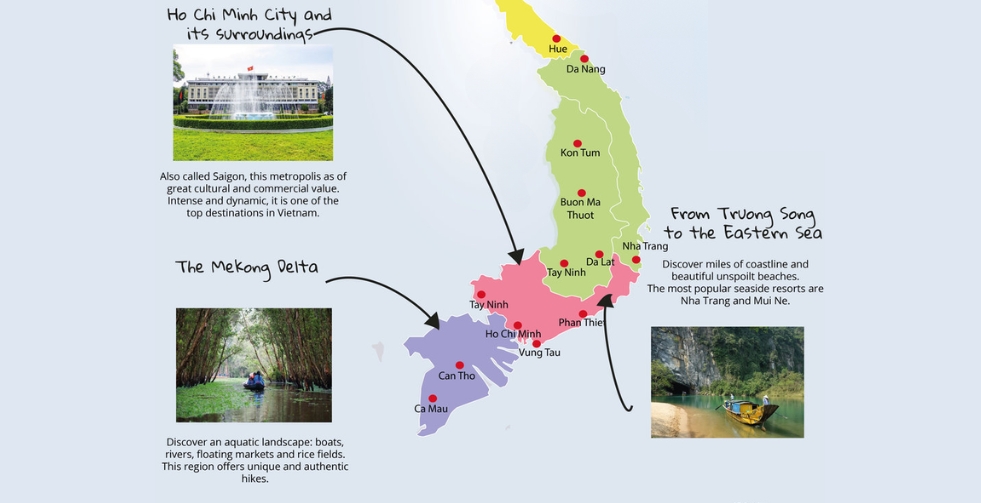
Southern Vietnam
Southern Vietnam is characterized by two main regions, the Mekong Delta and the Southeast.
The Mekong Delta, also known as the Southwest, is Vietnam’s largest rice granary with a dense network of rivers, vast rice fields, and diverse ecosystems. Visitors here will enjoy the peaceful atmosphere of riverside villages, explore bustling floating markets, and enjoy fresh tropical fruits. Notable destinations include Can Tho with Cai Rang floating market and Ninh Kieu wharf; Ben Tre, home to vast coconut groves and sampan rowing experiences, Chau Doc (An Giang) with Tra Su cajuput forest and the sacred Ba Chua Xu festival, and Ca Mau, where visitors can visit Ca Mau cape - the southernmost point of the country.
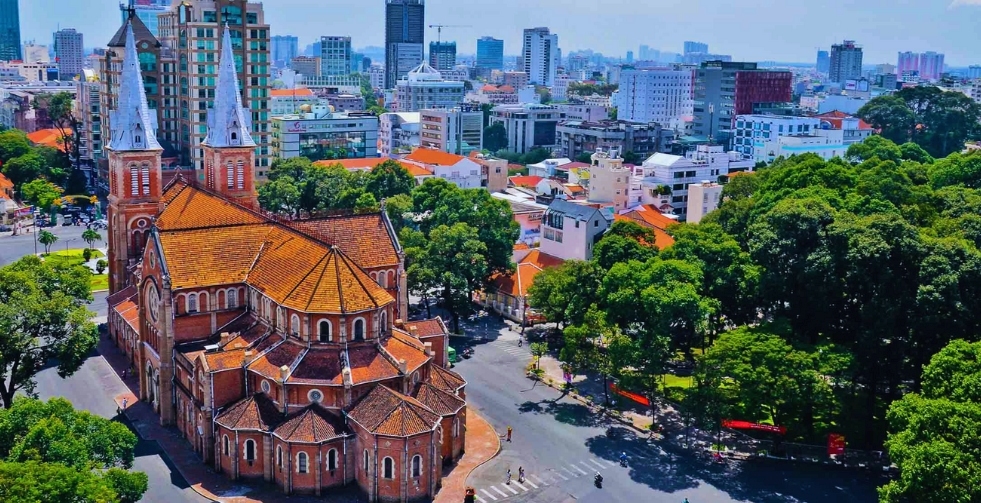
Notre Dame Cathedral in Ho Chi Minh City
The Southeast is a dynamic region where modern life meets unspoiled natural beauty. Ho Chi Minh City, the country’s largest economic and cultural center, is a must-see destination with historic architectural works such as Notre Dame Cathedral, Independence Palace, and Ben Thanh Market. Not far from the city are famous natural destinations such as Vung Tau with beautiful beaches and ancient lighthouses, and Tay Ninh with Ba Den Mountain and the unique Cao Dai Holy See.
More Southern Vietnam Tours is Here!
From simple street food to elaborate royal dishes, Vietnamese cuisine is a must-try for visitors when they come here. Let's explore the culinary map of Vietnam, from North to South, to better understand the typical flavors of each region of Vietnam food tour.
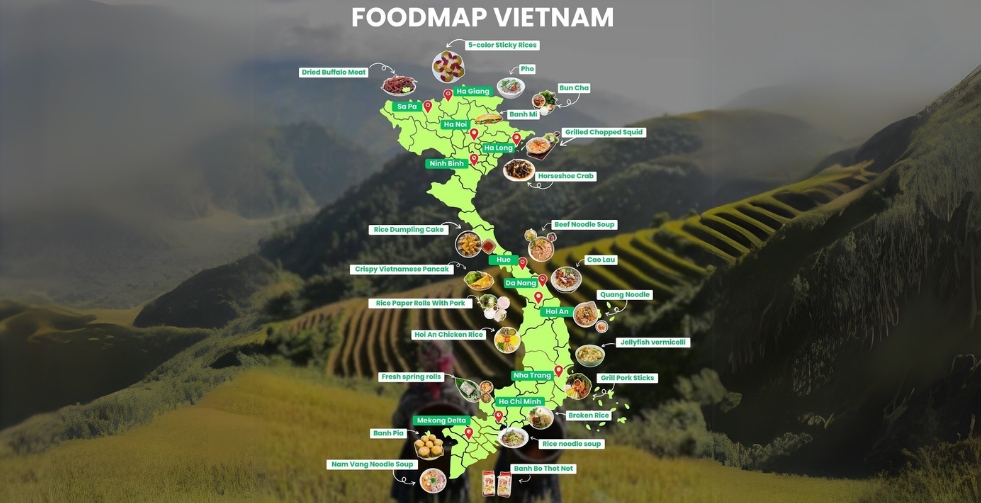
Vietnam Food Map
The North is famous for its elegant and refined dishes, often using fresh ingredients and few spices. Hanoi Pho is the national dish, with clear broth and soft rice noodles, served with beef or chicken.
Bun Cha is a dish that once captivated former President Obama, with fragrant grilled meat combined with sweet and sour fish sauce and fresh noodles. In addition, La Vong fish cakes in Hanoi and Northern Bread are also dishes you cannot miss when coming here.

Vietnam Food Festival
The Central region is famous for its flavorful, spicy dishes with a unique combination of spices. Banh Xeo and Banh Bot Loc are popular dishes in Hue, with the rich flavor of rice flour and shrimp and pork filling.
Com Hen is a typical dish of Hue, with white rice, mussels, raw vegetables, and spices, bringing a harmony of fresh ingredients. Mi Quang and Banh Trang Cuon Thit Heo are also typical dishes of Quang Nam and Quang Ngai, with a special flavor that visitors will find hard to forget.
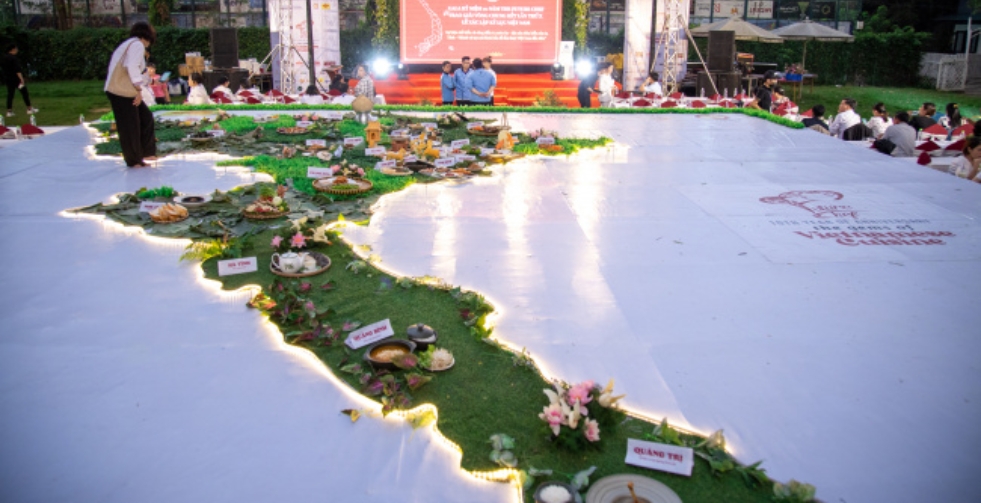
Central Vietnam Food
Southern Vietnam is famous for its rich, sweet dishes and many tropical fruits. Broken rice is a popular dish in Ho Chi Minh City, made from white rice served with grilled ribs, pork skin, egg rolls, and sweet and sour fish sauce.
Southern Vietnamese pancakes are also very famous, with a crispy crust, shrimp, meat, and bean sprouts, served with raw vegetables and sweet and sour fish sauce. Mam Hotpot in the West is a specialty of the people of the Mekong Delta, with rich fish sauce, served with delicious fresh fish.
In addition, the South is also famous for its tropical fruits such as Durian, Mango, Mangosteen, and Watermelon, always ready to serve those who love sweet and cool dishes. In particular, Che is a popular snack, with many types of Che from Green Bean Che, and Three-color Che to Corn Che, Banana Che, suitable for hot summer days.
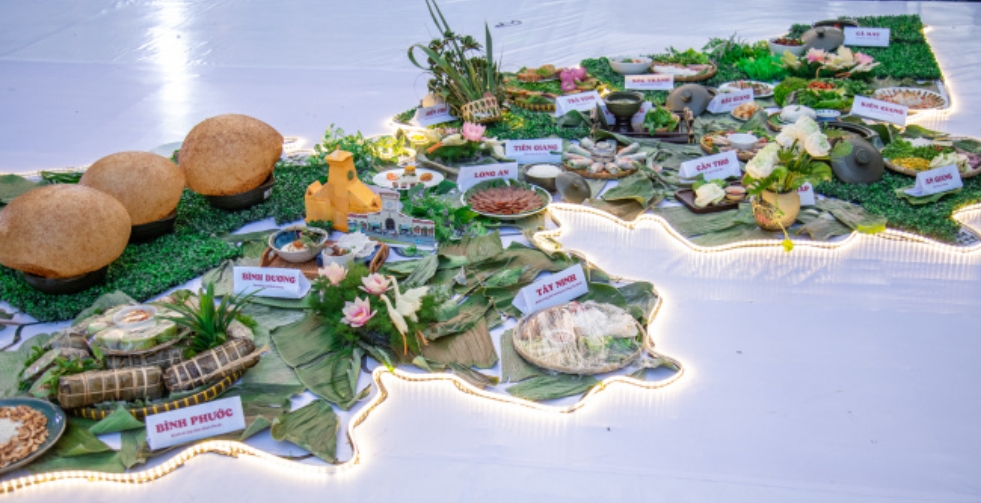
Southern Vietnam Food
Already have your map for your Vietnam tour packages, but how to move around these destinations? See some popular transportation in Vietnam below.
For long-distance travel, flights are the quickest way to cover Vietnam's vast distances, especially between the northern, central, and southern regions. Major cities like Hanoi, Ho Chi Minh City, Da Nang, and Hue are well-connected by both domestic and international flights. Vietnam has several airlines, including Vietnam Airlines, VietJet Air, and Bamboo Airways for affordable and frequent flights, making it easy to hop between different destinations quickly and comfortably.
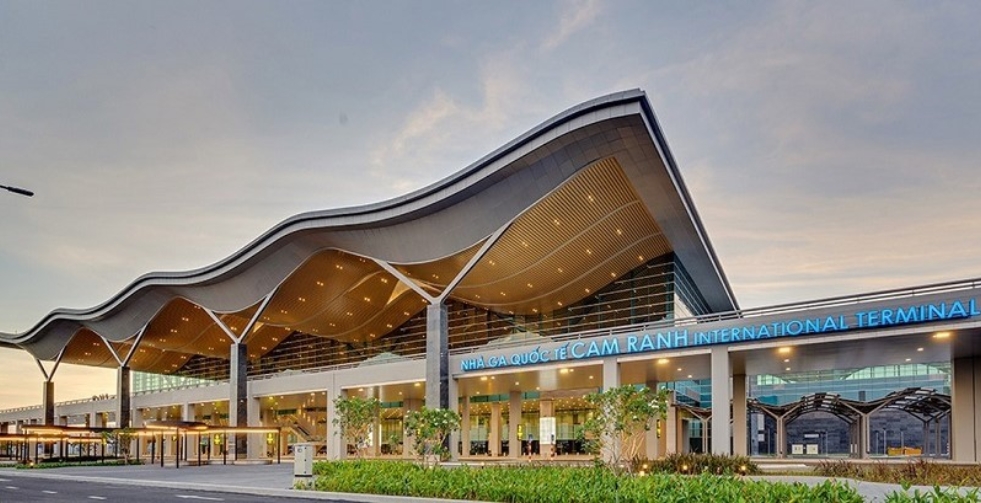
International Airport in Cam Ranh (Nha Trang)
Traveling by train in Vietnam is a scenic and leisurely way to explore the country. The Reunification Express, which runs from Hanoi to Ho Chi Minh City taking around 36 hours, is one of the most popular routes, providing stunning views of Vietnam’s coastline, mountains, and rural landscapes. Trains are generally safe, and affordable, and provide different classes for comfort levels, including soft berth and sleeper trains for longer journeys.
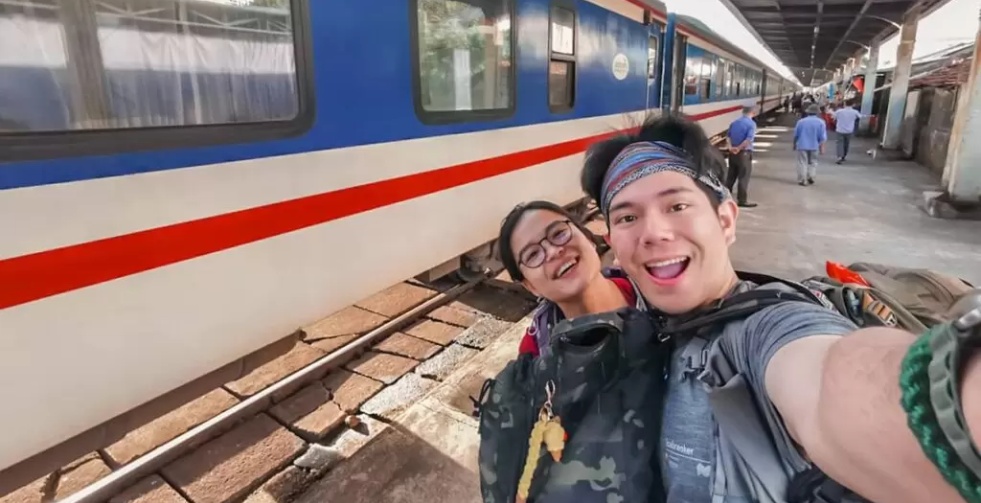
Train in Vietnam
Cars and buses are among the most convenient and cost-effective options for both short and long journeys in Vietnam. Private cars are great for those who prefer comfort and flexibility, especially for tours or traveling in groups.
For more budget-friendly options, buses are a great choice with many services from local to long-distance routes. The bus system is comprehensive, connecting major cities and towns, including sleeper buses for overnight travel. For example, buses connect Hanoi to Sapa, Hue to Da Nang, and Ho Chi Minh City to the Mekong Delta.
Motorbikes are the most popular and iconic way of getting around in Vietnam. It’s practical for navigating narrow streets, local markets, and tourist hotspots.
In larger cities like Hanoi and Ho Chi Minh City, motorbike taxis (GrabBike) are widely available. Many travelers also rent motorbikes for self-guided exploration, guided food tours or city day tours, especially in regions like Da Nang, Hoi An, and Phu Quoc. However, you should make sure to have a valid license and understand the local traffic rules before taking on the roads.
Bicycles are a great way to explore Vietnam at a slow pace, especially in rural areas or scenic spots like Hoi An, Ninh Binh, or the Mekong Delta. Tourists can use bicycle rentals, and you’ll find dedicated bike lanes in some locations.
Cycling allows you to connect with the local culture and enjoy Vietnam’s natural beauty up close. You can cycle along the coast, through the countryside, or around historic towns, a bike ride can be an unforgettable way to explore the country.
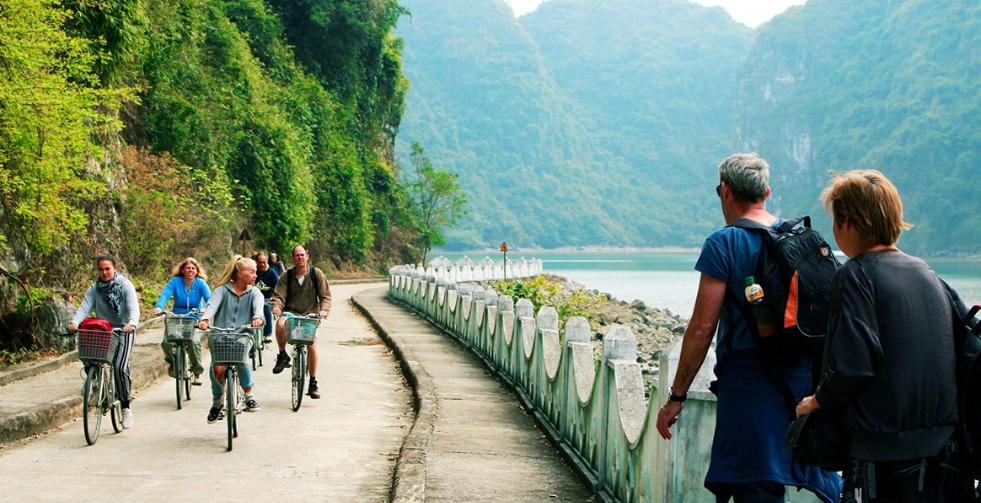
Cycling in Viet Hai Village in Halong Bay
Designed for travelers of all ages, nationalities, and preferences, the Highlight Vietnam Tour Package is a 13-day journey through Vietnam's most iconic destinations.
Day 1: Hanoi Arrival – Welcome Dinner (D)
Day 2: Hanoi City Tour – Cyclo Tour - Night Train to Lao Cai (B, L)
Day 3: Lao Cai - Sapa - Lao Chai, Tavan Villages (B, L)
Day 4: Sapa - Cat Cat Village - Night Train to Hanoi (B)
Day 5: Hanoi - Halong Bay Cruising (B, L, D)
Day 6: Halong Bay Cruising - Hanoi - Fly to Hue (B, L)
Day 7: Hue - City Tour (B, L)
Day 8: Hue - Drive to Hoi An driving over Hai Van pass (B)
Day 9: Hoian - Rural Cycling Half Day Tour (B, L)
Day 10: Hoian - Drive to Danang - Fly to Ho Chi Minh City (B)
Day 11: Ho Chi Minh City - Cu Chi Tunnels – City Tour (B, L)
Day 12: Ho Chi Minh City - Mekong Delta Day Trip – Ho Chi Minh City (B, L)
Day 13: Ho Chi Minh City – Departure (B)
The Vietnam Tourist Map provides a complete picture of this captivating country, guiding you through its vibrant cities, breathtaking natural wonders, and rich cultural heritage. But beyond the map lies the true journey, and that’s where Incredible Asia Journeys becomes your ultimate travel guide.
Let us be your personal "map", leading you to every corner of Vietnam, from the majestic mountains of the North to the tranquil waterways of the South. Contact us now to get free quotes and hot deals!
Choose the duration to explore Vietnam: